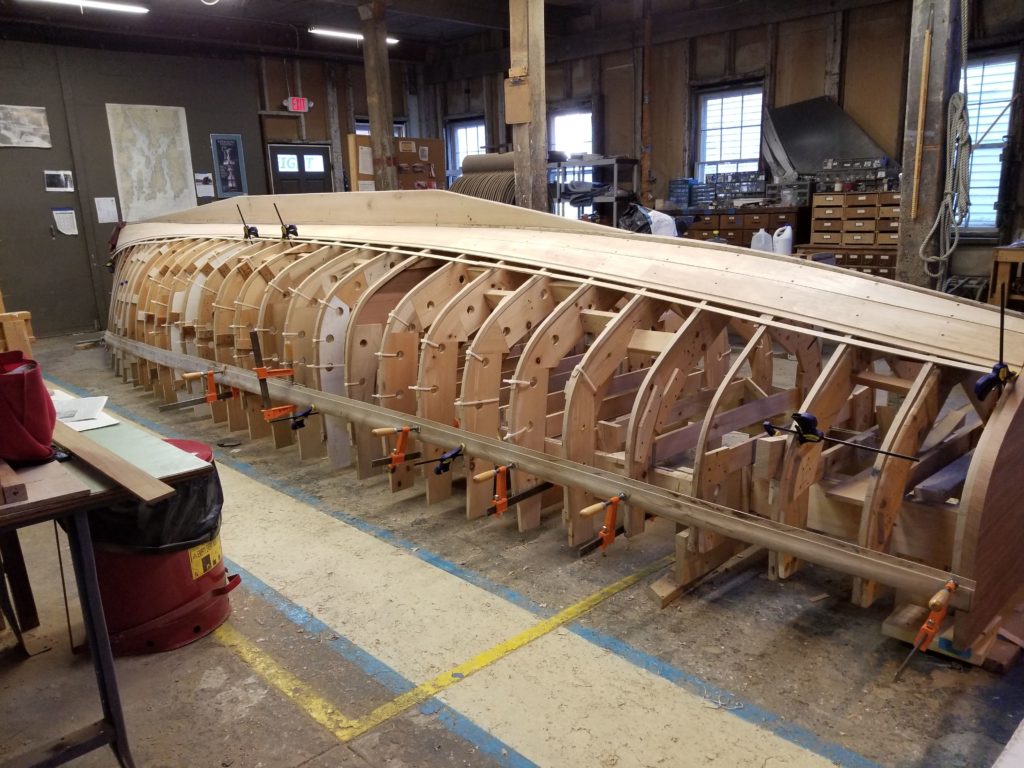October 2018
Our cedar planks are cut to width and planed to 1/4" thickness, but before we lay some planks in place let's review:
I've taken a previous photo to show that ribs in the middle section of the boat have a longer run than the ends and to note there is a sharp turn of the bilge in the center as well. So we have to figure out how many strakes to lay. The width of the plank will be governed by necessity to have sufficient width at the ends. It is simple math therefore to try a width that works well at both ends, yet narrow enough to follow the curve of the boat without appearing as a mess of flat tangents and also narrow enough to have sufficient thickness at the edges after long-board sanding the hull smooth. Not all planks have to be the same width. That sharp curve may require several narrower ribs in the middle as may differences in shape at either end. But then again, a mahogany launch may not look well with a hodge-podge of widths. Sometimes it is necessary to hollow out the underside of a plank to conform to the curve of a rib, but in the end It was not necessary with this width of plank and softness of cedar.
We were lucky, NGH made a simple form and all planks could be relatively the same width and launch #199 could serve as a starting point. Our job was also made easier since the mid-section would be left open for viewing of the steam system. The latter did not remove our need to have a fair run of each strake for the entire length of the boat, however.
Our job would be to complete a layer of cedar, sand it perfectly smooth to follow the profile, and then lay the mahogany to overlap the cedar as close to mid-plank of cedar strakes as possible and to avoid any screws underneath. With rabbets in the broad strake and sheer, there would be one more strake of mahogany. NGH Rules say the cedar and mahogany strakes are glued together with either thickened shellac or white lead paint.
NGH rules also say this double planking would fastened both from the outside to the ribs and inside. Many HMCo sail boats had double-planked topsides. We have two such boats in our shed - 1903 Bar Harbor 31 INDIAN and 1904 TRIVIA. So we clamored inside to find out the secret. Here's is INDIAN's screw pattern on the inside. These are not bunged or puttied over, just flush screwed. And certainly a random pattern of four screws between the ribs - a 1900 production boat not a 2018 restoration boat!
We never really resolved the manufacturing technique for inside planking. Seems on a larger boat a person could squeeze inside and screw the mahogany in place as it was laid and before the shellac dried, but that didn't seem feasible on this small launch. To really ensure good adhesion of shellac between cedar, we'd have to lay a couple of strakes of cedar and then a couple of strakes of mahogany over it, all the time reaching inside to fasten with small 3/8" screws. In the end we just opted to lay the whole boat in cedar first, then plank with mahogany, turn the boat over, and then screw from inside. An old guy solution!
Click the images below to view them larger:




